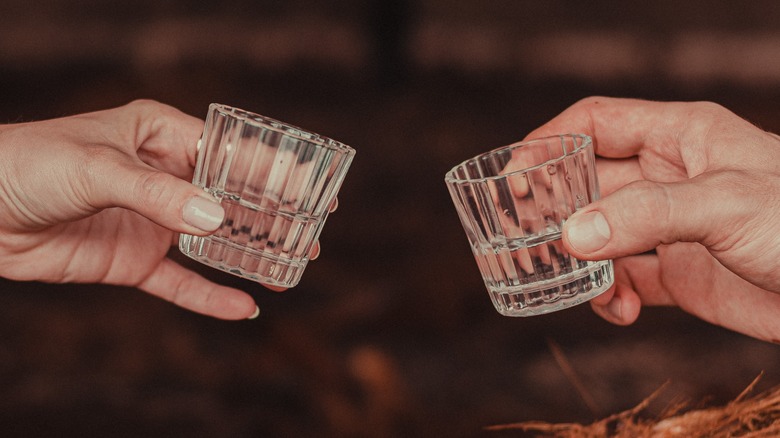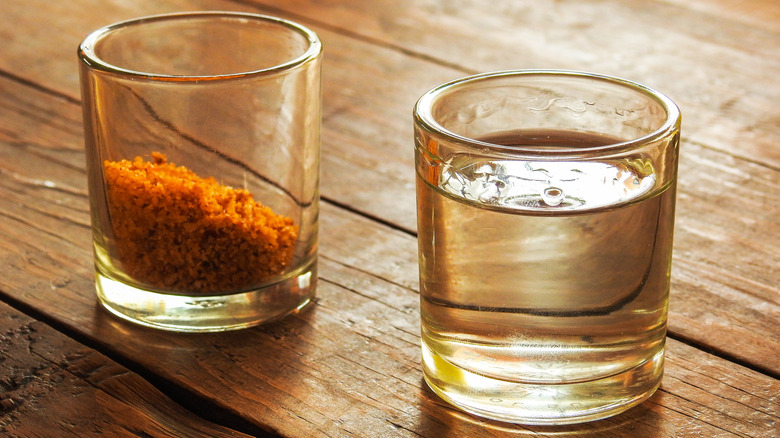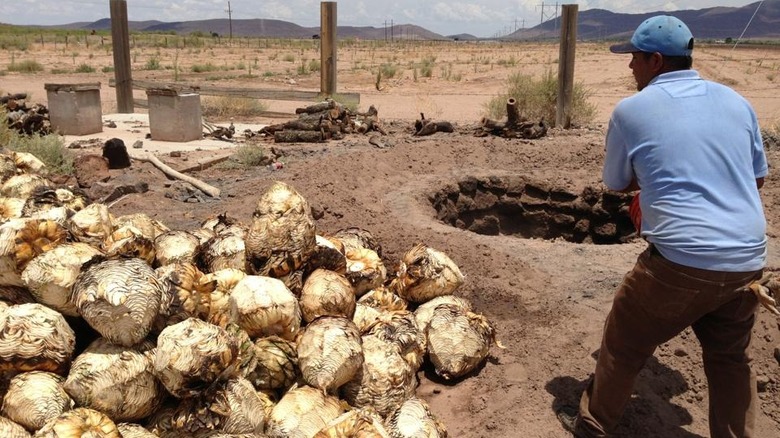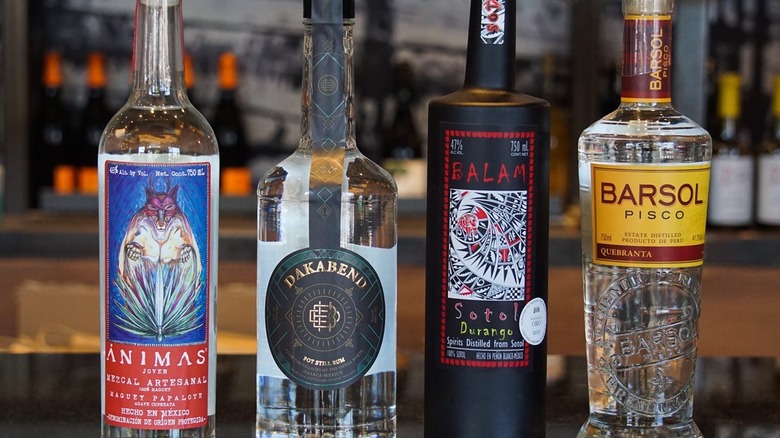What Is Sotol And How Is It Similar To Tequila?
Maybe you swore off tequila in college, maybe you love a midnight margarita, or maybe you drink a shot of it every day. If you like to be ahead of trends — especially when they're about the preservation of a storied tradition — you'll want to know about sotol.
Tequila hails from Mexico, and most are made from the blue agave plant. The blue agave takes 5 to 12 years to mature and, in harvesting, must be dug up — root and all. Steam baking then converts the starches to sugar, and hearts are crushed, fermented, and distilled at least twice. Blanco tequilas are unaged or rested for fewer than 60 days; reposado, añejo, and extra añejo are left to age for two months, one year, and three years, respectively.
Sotol is made from a related — same family as blue agave — but different eponymous desert plant called the desert spoon. The plant itself has thinner leaves, and maturation occurs in 10 to 15 years. Unlike its cousin, the root system can actually stay intact after harvest. The hearts are roasted with oak and/or mesquite wood in an earthen oven, similar to mezcal. It is then fermented and distilled like tequila, but it isn't always aged. Sotol's taste can vary dramatically, as the wild plant can grow in the northern Mexican states of Chihuahua, Durango, and Coahuila, as well as western Texas, southern Arizona, and New Mexico.
What does sotol taste like?
If tequila is crisp and mezcal is smokey, according to Wine Enthusiast, sotol is bright and grassy. The terroir of sotol can affect the tasting notes: forest-grown sotol can take on notes of eucalyptus, menthol, pine, or even mushroom, while desert-grown sotol can taste more like leather, cacao, and pepper. It can be vegetal, or it can be a little musky with a nose that is reminiscent of sweaty socks. Some have minerality, while others lean more toward lemongrass. Many still have the sharp greenness of a jalapeño. Generally speaking, there's a whole world of sotol to explore.
Sotol is traditionally sipped (or shot) neat, but with the vastness of sotol's flavor range, it's a fun replacement for tequila and mezcal in cocktails Why not make a sotol-and-tonic with a pine-forward sotol or a Mexi-hattan with an aged desert sotol, highlighting its deeper notes? In a nod to sotol's similar history, you can also swap it in for the moonshine in the Loveless Cafe's bee sting cocktail.
The history of sotol: long and sometimes brutal
Although it only recently began to enjoy a renaissance, sotol isn't new. Lecturer Jeffrey Keeling of Sul Ross State University tells the San Antonio Express-News there's good reason to believe that the indigenous people of the Rarámuri tribe were drinking fermented sotol 800 years ago, and potentially harvesting it as far back as 7,000 years ago. The name is said to have come from the Nahuatl word "Tzolotzin." Distillation was introduced by Spanish colonizers in the 16th century, and mass production of sotol began in the 1930s. This is when it started gaining a moonshine-like reputation and was outlawed by the Mexican government between 1944 to 1994.
Jacob Jacquez, the distiller of Sotol Don Celso, detailed the brutal prosecution of sotoleros — or sotol creators — during prohibition to Atlas Obscura. "My great-grandfather was kidnapped by the state police," Jacquez told the publication. Police would burn sotol operations and jail or even kill sotoleros. There's no definitive answer as to why sotol was banned while tequila wasn't; answers range from a crackdown on home distilling to pressure from the tequila industry. Some believe the U.S. mafia influenced Mexican policy to sell whiskey south of the border during American prohibition. Through this, sotol was branded similarly to moonshine's classist reputation: made by and consumed by rural, low-income people.
Sotol is making a comeback, but not without contention
Ten years after legalization, sotol was granted the designation of denomination of origin (D.O.), like tequila and champagne. This lasted fewer than 20 years — when former U.S. President Trump replaced the North American Free Trade Agreement with the United States–Mexico–Canada Agreement (USMCA), sotol's protections were left out in hope of a burgeoning industry in the American southwest. At present, 27 countries recognize Mexican sotol as a protected D.O., but the U.S. is not among them.
Mexican sotoleros feel deeply culturally connected to the history and the pain of brutal persecution. Texans feel that because so much of southwestern Texas is native habitat to the sotol plant, they should be able to produce Texas sotol, according to Atlas Obscura. There may be a movement among larger Mexican sotol distilleries to expand the D.O. to Chihuahua, Coahuila, and Durango, which are recognized by the World Intellectual Property Organization, but not by the USMCA.
In the meantime, sotol is gaining popularity among bartenders. More sotol is being sold in well-curated liquor stores, so if you like tequila and mezcal, don't sleep on sotol. Pick up a bottle (or two or three) and toast to the sotoleros who protected the tradition, as well as the bright future of the drink.



